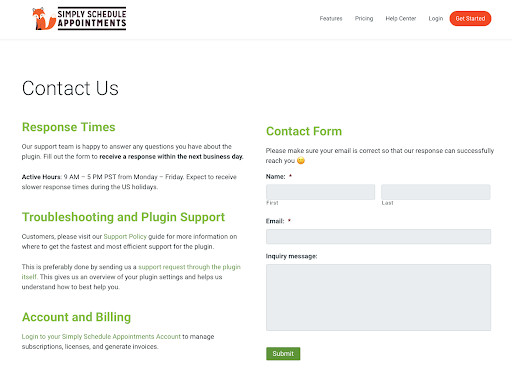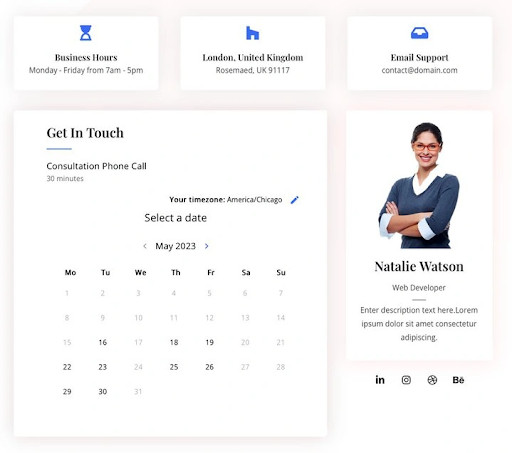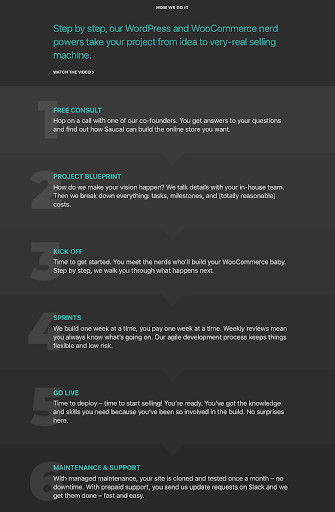Strategies to Optimize Your Time and Relationship with Clients
Spending hours maintaining client sites?
WP Remote will streamline your WordPress maintenance process and save you at least 4 hours every week.

Managing your time efficiently and fostering solid relationships with clients is crucial for the success of your business. In this blog post, we will explore practical strategies to optimize your time and client relationships.
Time Management and Why It’s Important for Client Relationships
Time management is an essential skill for anyone who works with clients. It involves planning, organizing, and prioritizing tasks to ensure that work is completed on time and within budget.
Good time management skills can help you build strong relationships with clients by ensuring that deadlines are met and projects are delivered on schedule. With effective time management, you can also maintain consistent communication with clients, keep them informed of project progress and ensure that their needs are met in a timely manner.
Strategy #1 – Establish Clear Expectations and Set Boundaries
Establishing clear expectations and setting boundaries is an important strategy so that everyone involved in the project is on the same page. This will help to ensure that all stakeholders understand their roles, responsibilities, and expectations. It also helps to create a sense of accountability for everyone involved, as well as providing a framework for communication and collaboration.
Some examples of when the project or client boundaries are unclear. For instance, the client:
- Creates additional tasks beyond the scope of the project and what was discussed in the contract
- Micromanages every step and approach in the project
- Is anxious to get you on the phone as much as possible to discuss every detail of the project every day
- Contacts every person on the team instead of speaking to a specific coordinator
- Tries to reach out to you at inappropriate times during the week (holidays, weekends, evenings)
When setting expectations with a client, there are certain do’s and don’ts that should be taken into account. Do’s include being clear about timelines, budget, deliverables, and communication protocols. Don’t include making promises you can’t keep or setting unrealistic expectations.
These could be laid out in the contract itself, you could send an automated email with this information, or you could have a webpage on your site dedicated to sharing these boundaries and expectations for your clients. Some important pieces to include are working hours, preferred communication channels and/or team members, and where to find information on their agreed turnaround times and deadlines.

Strategy #2 – Utilize Automation and Streamline Processes
Automation can be used to process mundane tasks such as data entry, customer service, and other administrative tasks. Streamlining processes can help to reduce the amount of time needed for tasks to be completed. This can lead to increased productivity, improved customer service, and reduced costs.
One example of how automation has helped streamline a client relationship is with the use of automated emails. Automated emails allow companies to send out personalized messages at scale. This allows for more efficient communication between companies and customers, as well as providing an easy way for customers to get in touch with your business if they have any questions or concerns.
How do you know what to automate? It comes down to breaking down your daily routines and figuring out which ones could be simplified and given to a computer to automate.
Here’s an example of a business owners day:
- Read all the new emails for the day
- Check on the next set of tasks
- Team meeting for the week
- Check-up on ongoing projects status
- Personal work time
- Contact clients and give them updates
- Finish the day with more emails
Most of you may have complex schedules or it may be difficult to pinpoint an exact pattern to your days but let’s just say these are the main areas that take up time.
As you may have guessed, some of these cannot be automated. For example, you can’t get AI to speak to clients for you (not yet at least!). But you may be surprised at how much the little things throughout the day can be time-sucks.
Some ideas to automate based on our business owner’s example:
- Switch to a mailbox software that automatically filters which emails are most important or at least categorizes them for you.
- Set up a Zapier workflow to copy the list of next tasks for you and email them to you instead of risking getting sidetracked looking for them.
- Have team members write up the project status at the end of each day and have their notes emailed to you every morning.
- Automatically set up a no-interruption space on your computer and smartphone while you work on personal projects.
- Have clients schedule meeting times during the periods of the day that best suit your schedule.
Strategy #3 – Prioritize Tasks Based on Return on Investment
Return on Investment (ROI) can be calculated by taking into account the costs associated with a task and comparing it to the expected outcome. This strategy helps businesses identify which tasks are worth investing their time and resources in, so they can focus their efforts on those that will yield the highest returns.
ROI calculations involve analyzing both financial and non-financial factors, such as customer satisfaction, employee morale, market share, brand recognition, etc. Additionally, it requires taking into account any costs associated with running an agency, such as overhead costs and marketing expenses.
Let’s look at our previous example with the business owner. He spends two hours of his day speaking with clients and sharing updates with them. Those two hours allow the owner to build a personal connection with the clients and he believes it helps him build trust and gain more customers.
Although he loves to do this, he finds that a lot of the questions clients tend to have are repetitive and quite simple. As the owner of the business, he is the most valuable person on the team. This makes him begin to realize that there could be better ways to spend his time to grow the business.
Cutting back on client time by one hour, he instead decides to work on resources for his clients so that they can find answers to their questions on their own. He also begins to train a personable project manager to take on some of the interactions with the clients. And now, having the help he needs in the form of long-standing resources for his clients plus assistance from a team member he can reduce his client time significantly down to 30 minutes a day.
This allows him to spend more time working on bigger projects and clears up his mind to start thinking about ways to grow his company.
Strategy #4 – Use Scheduling Tools to Maximize Efficiency
Scheduling is a powerful tool for optimizing your time and relationships with clients. These tools can help streamline the process of scheduling and managing appointments, making it easier for clients to book their desired time slots.
One of the critical challenges in maintaining a productive relationship with clients is managing time effectively. By enabling online self-scheduling, it eliminates the need for manual scheduling, freeing up time and resources for other tasks. Furthermore, appointment booking tools provide useful features such as automated reminders and notifications that help clients stay on top of their appointments.
Simply Schedule Appointments
This robust WordPress plugin allows you to manage appointments, automate reminders, integrate with your existing workflow, and maintain a consistent brand experience. Take control of your time and strengthen client relationships with Simply Schedule Appointments.
- Offers automated email and SMS notifications and reminders to keep your clients informed and prepared.
- Integrates effortlessly with Google Calendar, Mailchimp, and Zapier Webhooks, ensuring that all your appointments are synchronized across platforms.
- Allows you to customize the appointment booking process to align with your brand’s look and feel.
- The team booking feature allows clients to book times with project managers, the sales team, and customer service. Add an unlimited number of employees at no extra cost.
- Built-in tracking options to measure the performance of your campaigns, understand customer behavior, and measure the ROI of your website’s efforts.

Strategy 5: Focus on Indirect Communication Channels
Allowing your team to be on-call at all times is time-consuming because you never know when a client will decide to check-in. In addition, it’s impossible to gauge how long the conversation will last. What you expect to be a quick 5 minute phone call with your client, ends up taking 45 minutes and now you’ve lost track of the work you were doing before!
Maintaining indirect communication with clients is key to optimizing your time because this puts you and your team in control of when you respond to your clients. This is especially useful when dealing with multiple clients or working on different projects simultaneously. Examples of indirect communication are emails, contact forms on your website, or Slack messages.
These channels offer several advantages over direct communication via phone calls. While phone calls may be necessary for certain situations, such as urgent matters or complex discussions, indirect communication methods are more efficient and better in most cases.
Unlike phone calls, which require immediate attention, indirect messages allow for greater flexibility in terms of response time. Clients can communicate their needs and questions at their convenience, and you can respond when you have the necessary information or when it suits your workflow. This helps in managing your time effectively and also helps in prioritizing conversations with clients.
Written communication also allows you to carefully craft your responses, ensuring accuracy and professionalism. You have more time to gather relevant information or consult colleagues before providing a comprehensive answer. Receiving phone calls in the middle of the day could catch you off guard and you may not have all the answers or details of the project on the top of your head.
Lastly, indirect communication methods help with settings boundaries because you’re able to document each conversation. By exchanging information and instructions in writing, both parties have a record of what was discussed and agreed upon. This can be invaluable for reference purposes, ensuring clarity, and resolving any misunderstandings that may arise in the future.
Strategy 6: Provide Valuable Resources and Documentation for Clients
Providing valuable resources and documentation to clients is crucial for several reasons. Firstly, it helps to minimize the need for constant contact between clients and your business. By offering comprehensive and easily accessible resources, clients can find answers to their questions and solutions to their problems independently, saving both you and your client time and effort.
Valuable resources and documentation empower clients to become more self-sufficient. When clients have access to well-organized and informative materials, they can make informed decisions. This not only enhances their overall experience but also increases their confidence in the products or services provided by your business.
Additionally, providing comprehensive resources demonstrates a commitment to excellent customer service. It shows that your team values its clients’ time and strives to offer them the support they need. When clients can easily find the information they need, they feel supported and are more likely to develop trust and loyalty towards your business.
Offering valuable resources and documentation can significantly reduce the burden on you and your team. Instead of inundating with repetitive questions, clients can refer to the available resources for quick answers. This allows your team to focus on more complex or unique issues, ensuring a higher level of service for all clients.
If you don’t have any resources on your website, this may feel like a huge undertaking, but it doesn’t have to be! Starting off with the low-hanging fruit, you can step-by-step get to a place where your business and work is fully documented. Here’s is list of content that you could work on completing to achieve this:
- Gather a list of the 10 most commonly asked questions from your clients. You and your team may need to brainstorm but in the end it should be a fairly easy task. Once you have your list, write out simple 2-3 sentence answers for each question. Place this list as a FAQ section on your website, or you could also create a new page dedicated to Frequently Asked Questions.
- Document the process for each of your services. Sometimes, clients just want to know what step they’re on and what’s coming next. Creating an infographic or creating a numbered list with added details to each step would help your clients better understand your work approach. And don’t forget to Include information on deliverables, time frames, and goals.
- Have your team write blog posts describing the deliverables and their ultimate benefit for the client. Break down each of the deliverables your team provides at the end of a project and describe how they benefit the customer. This is a good place for clients to reference during their time working with you, or it could be a helpful sales resource for leads visiting your website.

Conclusion
Time and relationships with clients are essential for any business. Optimizing these two aspects can help you get the most out of your work and increase the success of your business.
We explored some strategies on how to optimize your time and relationships with clients so that you can make the most out of every project. From setting expectations to staying organized, we hope we could inspire some ideas to help you maximize your productivity and build stronger client relationships.
Tags:
Share it:
You may also like

Introducing WP Remote’s Page Content Monitoring: Ensuring Complete Website Functionality
Ensuring your website is accessible is crucial, but it’s only part of the picture when it comes to full site functionality. Even when your site appears up, critical components such…

Never Miss A Domain Renewal Again: Introducing WP Remote’s Domain Monitoring
Domain renewals are another line item in a long list of things to remember. Especially if you have purchased domains for longer terms—think three- and five-year licenses—it is all too…

A Little to the Left: What Would You Do if Your Site Design is Microscopically Different?
We spend a lot of energy getting site design right. And with good reason! Because gone are the days where a bad-looking site with good content (and great intentions) will…
How do you manage your websites?
Managing multiple WordPress websites can be time consuming and error-prone. WP Remote will save you hours every day while providing you complete peace of mind.

Managing everything yourself
But it’s too time-consuming, complicated and stops you from achieving your full potential. You don’t want to put your clients’ sites at risk with inefficient management.

Putting together multiple tools
But these tools don’t work together seamlessly and end up costing you a lot more time and money.


